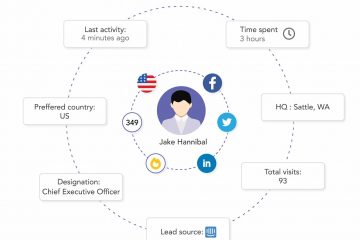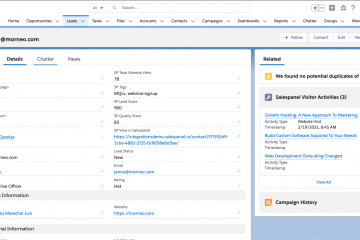How is Position-Based Attribution best for B2B?
Data analytics has proven to be a powerful tool for B2B businesses. It is amazing how technology and data can provide in-depth insights into every business function. Information has always held a lot of value and aided decision-making for ages.
Every business and brand is leveraging technology in one form or another to grow consistently and to earn more profits. Marketing is an important function for any business and this is what drives the growth of a business. Hence, the use of technology, data and data analysis to aid this function is not only effective but necessary.
Every customer follows a path in their journey from discovering your business to becoming a customer. Data analysis has allowed businesses to understand how each channel and each touchpoint in the journey turn an audience into a customer. This information can help in predictably acquiring customers and scaling successful strategies.
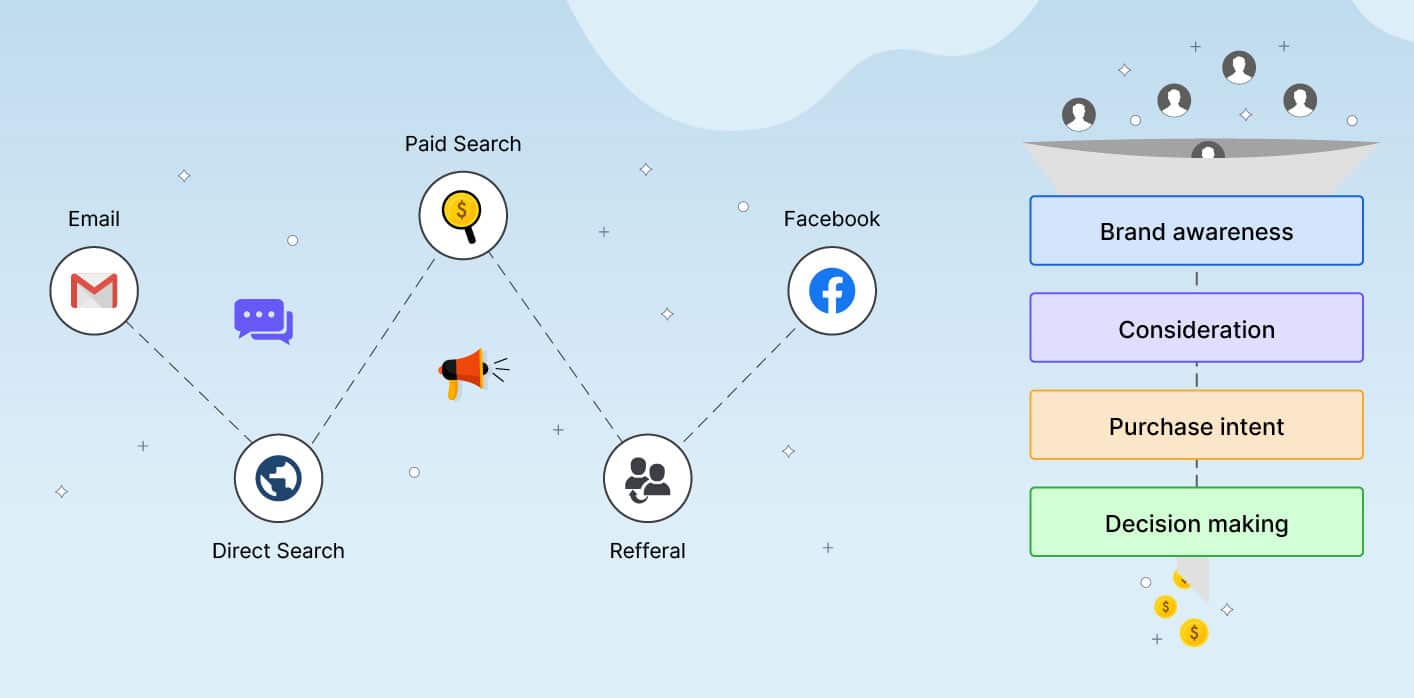
All of this has been made possible with Marketing Attribution.
Let’s Understand Marketing Attribution
Marketing attribution is a data analytic method that helps a marketer assess how each touchpoint and marketing channel is contributing to the process of converting an audience into a customer.
This insight helps determine the value or ROI each marketing channel is providing to the business. This information can aid decision-making pertaining to which channels are effective, which can be leveraged, and which need to be reworked, phased out, or abandoned completely.

Image Courtesy – agencyanalytics.com
The more detailed insight about the contribution and effectiveness of each touchpoint of a marketing channel can be used to optimize the effectiveness of the marketing channel further to boost the ROI from that particular channel.
There are different models for marketing attribution that serve different purposes and offer varying degrees of insight and analysis. Let us find out more about those.
Marketing Attribution Models
Attribution models mainly fall into two categories based on the number of touchpoints they consider for attribution viz. Single-Touch Models and Multi-Touch Models.
Single-Touch Models
These marketing attribution models assign credits to a single touchpoint along the customer journey.
First-Touch Attribution
As the name suggests, the First Touch Attribution model assigns the entire credit of customer conversion to the first touchpoint the customer interacted with along his customer journey.
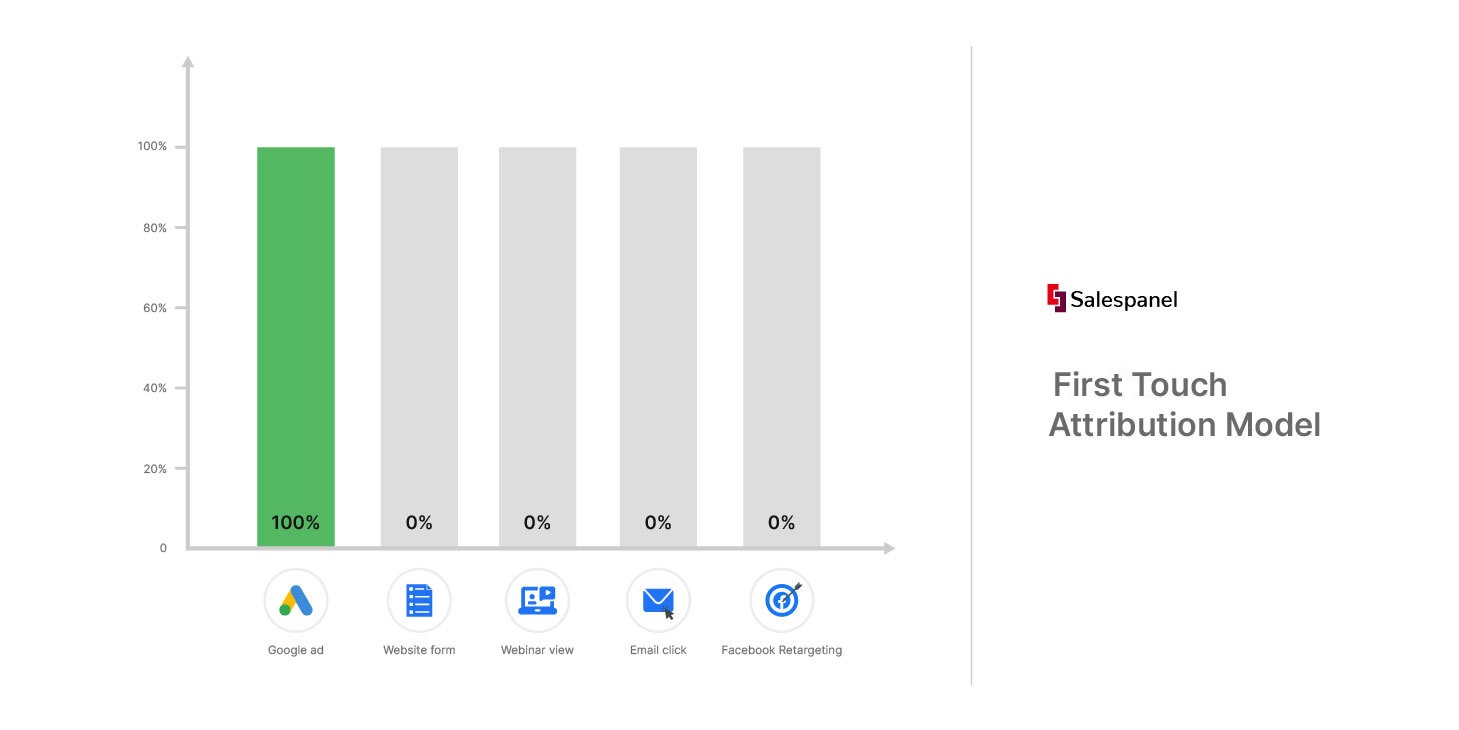
For example, if a customer finds your business through a YouTube Ad, then YouTube will be assigned the entire credit for the conversion.
Last-Touch Attribution
Last Touch Attribution is the default marketing attribution model in Google Analytics. It assigns the entire credit of conversion to the last interaction a lead had with your brand before converting into a customer.
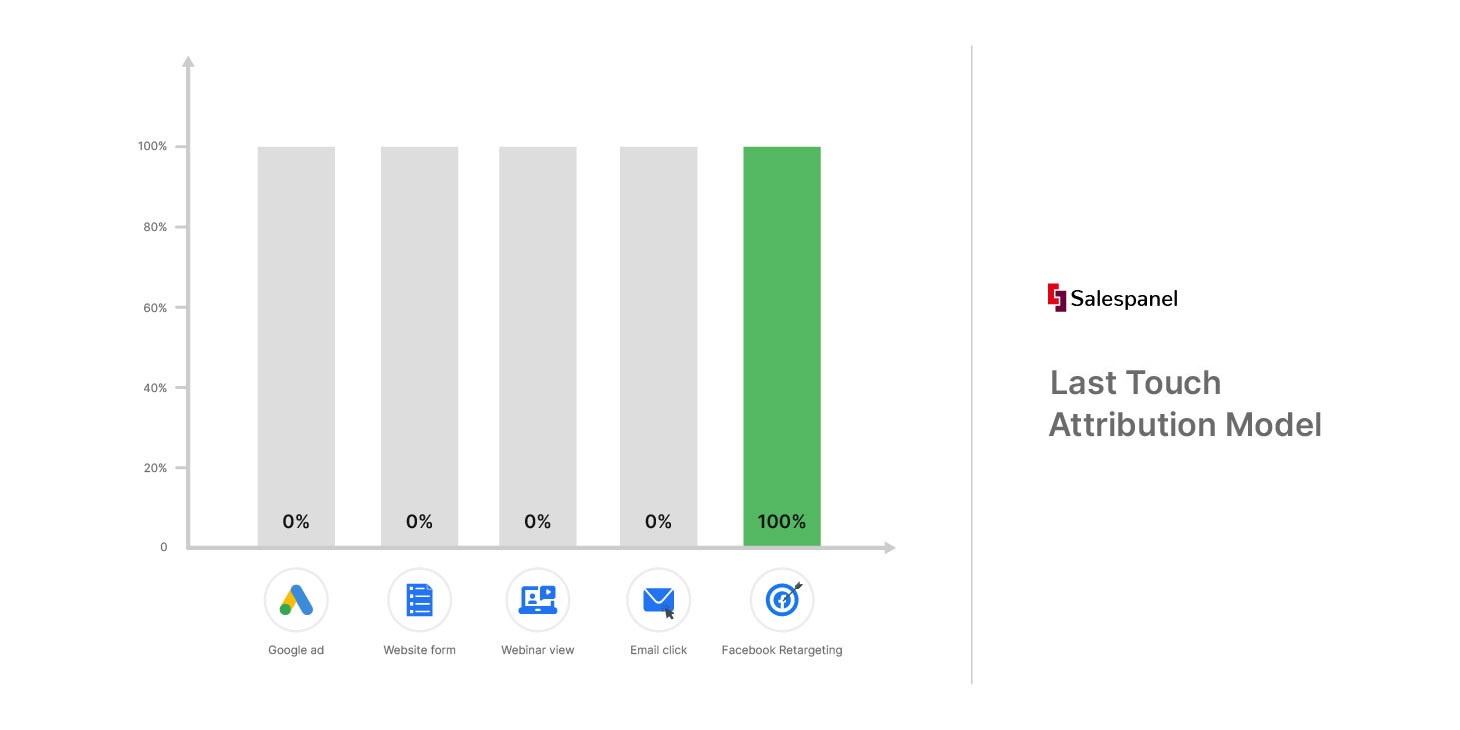
For example, a customer has been seeing your products on their social media feed for quite some time and they get an email about a limited period offer which they then decide to purchase, in that case, the entire credit of conversion is assigned to Email.
Last Non-Direct Touch Attribution –
Similar to Last Touch Attribution, this model assigns the conversion credit to the last non-direct touchpoint in the customer journey as in most instances the last touchpoint is usually direct traffic which does not help understand the contribution of channels.

Image Courtesy – agencyanalytics.com
For example, a customer has been coming across your posts and ads through social media, they spot a good deal on your post on Instagram and go to the browser and reach your site to make a purchase. In this instance, the credit is assigned to Instagram.
Multi-Touch Models
Practically, a single touchpoint is never entirely responsible for converting a lead into a customer. Multiple touchpoints build momentum which finally culminates in the lead converting.
Linear Attribution
This marketing attribution model equally distributes the conversion credits among the touchpoints a customer has interacted with along their customer journey.
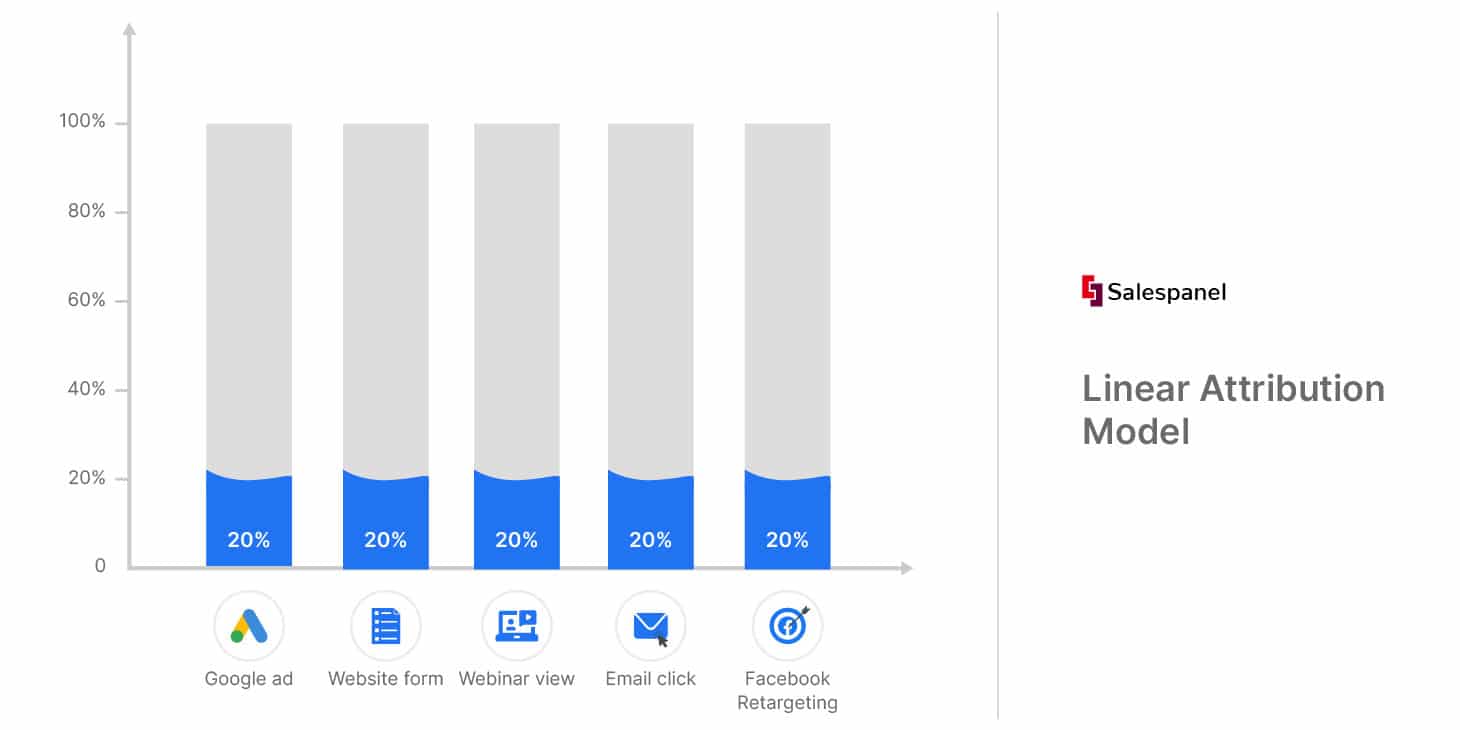
Consider that a lead saw your post on Facebook and then after a few days saw another on Instagram and Youtube and finally saw your post on Pinterest, after which he/she decided to make a purchase.
In this instance, the conversion credit will be equally divided between Facebook, Instagram, YouTube and Pinterest i.e. 25% to each channel.
Time-Decay Attribution
Similar to Linear attribution as it assigns credits to all the touchpoints but it also accounts for when each touchpoint occurred. Thus the touchpoint that occurred closest to conversion gets the highest credits while the first touchpoint gets the least.
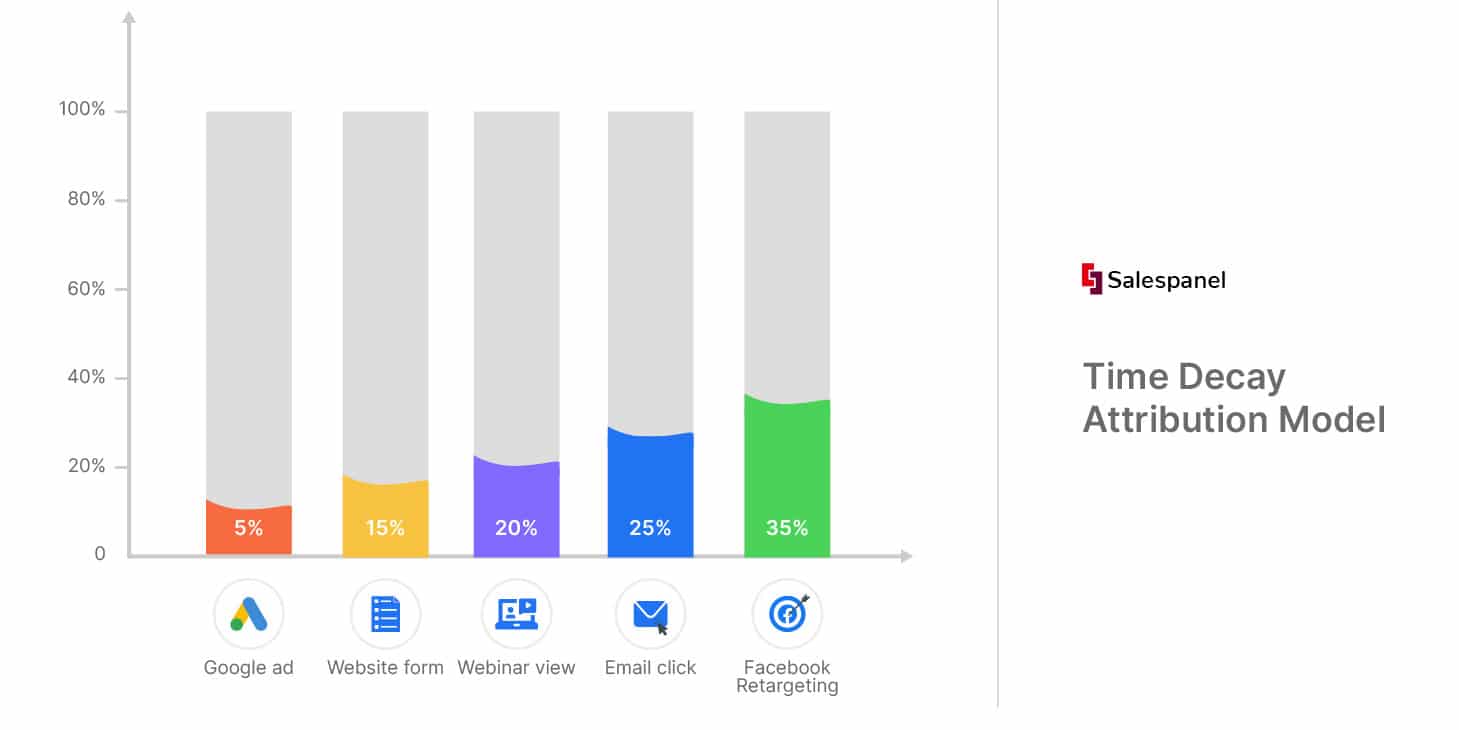
The credits for conversion are distributed in increasing order with respect to a touchpoints’ closeness to the point of conversion.
Position-Based Attribution
The Position-Based Attribution model assigns 40% conversion credit to both the first and the last touch a lead interacted with before converting into a customer. The rest 20% is equally assigned to all the other touchpoints in the customer journey.
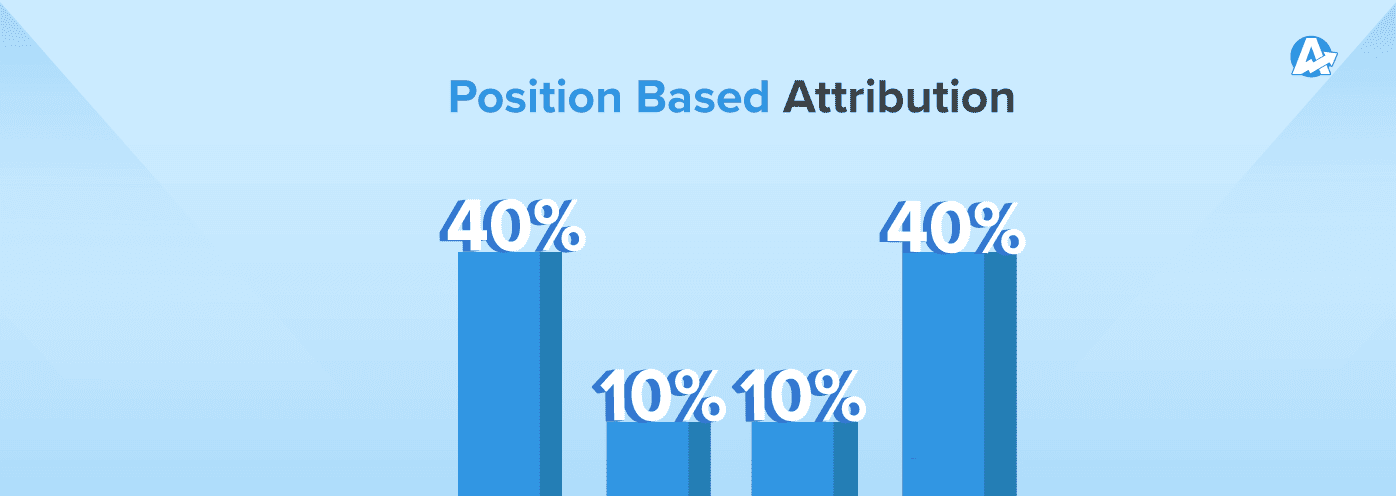
Image Courtesy – agencyanalytics.com
For Example, if a customer first saw your post on Instagram, then on Facebook, YouTube, Twitter and Google Search then, Instagram and Google will both be credited with 40% while the rest will be credited with 6.3% each.
Custom Attribution
Google Analytics has an advanced model of Custom Attribution available to fulfill the requirements of expert and experienced marketers alike. Here the marketers assign credit values for every specific touchpoint and then automate the attribution process.

Image Courtesy – agencyanalytics.com
For example, an expert marketer who understands consumer psychology might know which touchpoints are more likely to pivot the buying decision of audiences. He can then assign values to those touchpoints accordingly.
Diving Deep Into Position-Based Attribution
The B2B Sector experiences long sales cycles which usually stretch for months at times. While the time it takes to close a deal is no issue, understanding the contribution of marketing channels and elements therein towards conversion becomes difficult.
Not only does one have to track deals for months but there are significantly more touchpoints involved in a B2B sales cycle compared to the B2C one.
This is where the Position-Based Attribution model comes into the picture. This model solves a lot of inherent issues with attributing a B2B sales cycle encountered when using other marketing attribution models.
The Position-Based Attribution model assigns 40% conversion credit to both the first and the last touch a lead interacted with before converting into a customer. The rest 20% is equally assigned to all the other touchpoints in the customer journey.
Position-Based Attribution vs other Attribution Models
V/s Single Touch Attribution Models
Pros –
In essence, as the Position-Based Attribution Model is a multi-touch attribution model, it is in theory and practice superior to any single-touch attribution model as it accounts for all the touchpoints in a customer’s journey right before they convert.
It is able to showcase the entire picture of the contribution of various touchpoints and does not emphasize a single touchpoint as being the one that influenced the customer’s buying decision entirely.
A lot more information is available when utilizing position-based attribution modeling in comparison to any single-touch attribution model. This additional insight can help further optimize the marketing function to maximize the ROI.
Cons –
Relatively complex compared to Single-touch attribution models and not as easy to set up and use either. This model is not beginner-friendly and requires an experienced analyst or marketer to utilize its generated information to the full extent.
V/s Linear Attribution Modeling
Pros –
The credit distribution is better in this model as the first touchpoint is the point of entry for a lead into the customer journey and highlights which entry touchpoints are most effective. While the final touchpoint pushes the lead into actually making a purchase.
The in between touchpoints are also accounted for, for building up the momentum which culminates into the conversion.
Cons –
Slightly more complex when compared to linear attribution modeling which makes it less friendly for beginners. As stated before, it requires expert marketers and analysts to be able to reap benefits out of its data thoroughly.
V/s Time Decay Attribution
Pros –
Time Decay attribution is quite similar to linear attribution. It assigns conversion credits to touchpoints in increasing order of proximity to actual conversion. The Position-Based Attribution Model credits both the first and last touchpoint while time decay attribution only credits later touchpoints.
The linearly increasing credit assigning of Time Decay fails to provide much insight into the actual effectiveness of the original marketing touchpoint or channel.
Cons –
Time decay model works better in cases where the final touchpoints are critically more important than initial ones.
V/s Custom Attribution Modeling
Pros –
Relatively easier to deploy and use compared to Custom Attribution Modeling. Doesn’t require the level of expertise and experience needed to assign custom credits to each touchpoint involved in Custom Attribution Modeling.
Cons –
Not as thorough as Custom Attribution Modeling in terms of analyzing and assigning credits to various touchpoints in the customer journey. The level of details and actionable information is lacking in Position-Based Attribution in comparison to Custom Attribution.
Lacks flexibility that is available with Custom Attribution Modeling and hence is limited in the scope of use due to the constraints of the model itself.
Conclusion
Marketing Attribution is a good analytical strategy that provides insight into the marketing function of a business and how much value each channel and touchpoint is providing in terms of ROI.
Multi-touchpoint attribution models are superior in terms of accuracy and the level of insight they provide and among the multi-touchpoint attribution models, the Position-Based Attribution model is the most balanced approach. It crediting both initial and final touchpoints more than others is fruitful for companies who see first and last connection points as superior.
It might be a bit complicated to set up and use for small businesses, but it is the perfect option for medium to large businesses, especially those in the B2B space.
Sell more, understand your customers’ journey for free!
Sales and Marketing teams spend millions of dollars to bring visitors to your website. But do you track your customer’s journey? Do you know who buys and why?
Around 8% of your website traffic will sign up on your lead forms. What happens to the other 92% of your traffic? Can you identify your visiting accounts? Can you engage and retarget your qualified visitors even if they are not identified?
